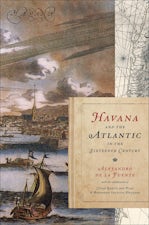American Baroque
Pearls and the Nature of Empire, 1492-1700
By Molly A. Warsh
304 pp., 6.125 x 9.25, 13 color plates., 31 halftones, 6 maps
-
Hardcover ISBN: 978-1-4696-3897-3
Published: April 2018 -
Paperback ISBN: 978-1-4696-6625-9
Published: August 2021 -
E-book EPUB ISBN: 978-1-4696-3898-0
Published: March 2018 -
E-book PDF ISBN: 979-8-8908-5411-7
Published: March 2018
Published by the Omohundro Institute of Early American History and Culture and the University of North Carolina Press
Buy this Book
- Hardcover $39.95
- Paperback $29.95
- E-Book $19.99
For Professors:
Free E-Exam Copies
Published by the Omohundro Institute of Early American History and Culture and the University of North Carolina Press
Pearls—a unique source of wealth because of their renewable, fungible, and portable nature—defied easy categorization. Their value was highly subjective and determined more by the individuals, free and enslaved, who produced, carried, traded, wore, and painted them than by imperial decrees and tax-related assessments. The irregular baroque pearl, often transformed by the imagination of a skilled artisan into a fantastical jewel, embodied this subjective appeal. Warsh blends environmental, social, and cultural history to construct microhistories of peoples’ wide-ranging engagement with this deceptively simple jewel. Pearls facilitated imperial fantasy and personal ambition, adorned the wardrobes of monarchs and financed their wars, and played a crucial part in the survival strategies of diverse people of humble means. These stories, taken together, uncover early modern conceptions of wealth, from the hardscrabble shores of Caribbean islands to the lavish rooms of Mediterranean palaces.
About the Author
Molly A. Warsh is associate professor of history at the University of Pittsburgh
For more information about Molly A. Warsh, visit
the
Author
Page.
Multimedia & Links
Listen
Warsh talks to Liz Covart on this episode of Ben Franklin's World. (Episode 241, running time 57:21).




